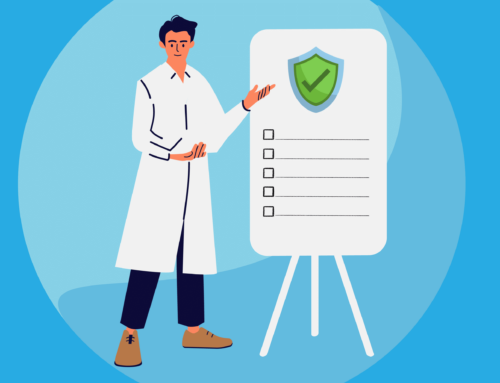The stakes are high for patient and employee safety in the healthcare industry. Leadership and employees need to understand and comply with Occupational Safety and Health Administration (OSHA) standards.
Given the fact that healthcare systems are not closed environments, like warehouses or food production lines, OSHA standards are not simply regulations; they serve as a moral imperative to those with the power to ensure safety and well-being.
This post explores how an OSHA risk management plan and OSHA risk management training are intended to serve as more than tasks on a compliance checkbox. They provide guidance to maintain secure and efficient healthcare delivery in a safe environment.
A Quick Overview of OSHA Risk Management
The Occupational Safety and Health Act laid the groundwork for Congress to create and enact OSHA, enabling it to promote and ensure safe and healthy working conditions. It does so by setting and enforcing standards via training, outreach, online and offline source materials, education, and additional assistance.
What Is OSHA Risk Management in Healthcare?
There is abundant risk in any hospital setting, making OSHA a necessary risk management strategy. The healthcare industry is teeming with risks, including biohazards and workplace stress.
Like any other setting, OSHA non-compliance isn’t just about fines. Non-compliant health systems put everyone at risk, compromising patient care and employee well-being.
OSHA has considered the special considerations in healthcare situations and created a Hospitals eTool to assist hospital leadership with:
- Identifying and assessing workplace safety and health needs
- Implementing safety and health management systems
- Enhancing safe patient handling and violence prevention
The Best OSHA Risk Management Strategy in Healthcare Environments
A well-structured health and safety training program goes beyond ensuring regulatory compliance. The right strategy primarily focuses on cultivating a culture of safety and preparedness to avoid unnecessary stress, worry, illness, or negative and harmful events.
The best OSHA risk management strategy typically consists of developing a comprehensive OSHA risk management plan comprised of:
- Risk Identification. Training begins with recognizing potential hazards in healthcare settings.
- Risk Mitigation Strategies. Teaching effective methods minimizes risks.
- Emergency Response Training. Equipping staff with the proper skills helps them handle unforeseen incidents.
- Continuous Education and Engagement. Looking at OSHA risk management training as an ongoing journey for everyone on your healthcare team will help them face new risks and threats that can arise at any time. Organizations should stay vigilant and plan for new training as needed. Further, continuous education keeps healthcare professionals up-to-date on the latest best practices and regulatory updates.
Are You Ready to Reassess and Redirect Your OSHA Risk Management Strategy?
Do you feel like it’s time to review, evaluate, and possibly redirect your OSHA risk management strategy? Do you want to see how compliance software can transform your approach?
Schedule a demo to see the difference a comprehensive OSHA risk management solution can make in your healthcare organization. Keep your health staff safe and healthy while staying on budget!
Contact us with any additional questions about OSHA or any other compliance matter to see how we can help.








